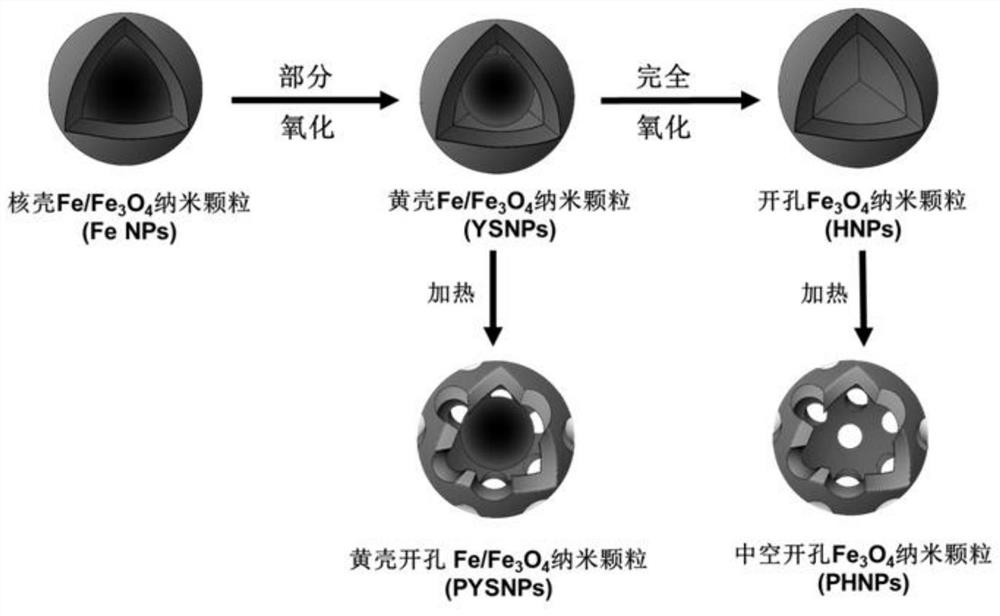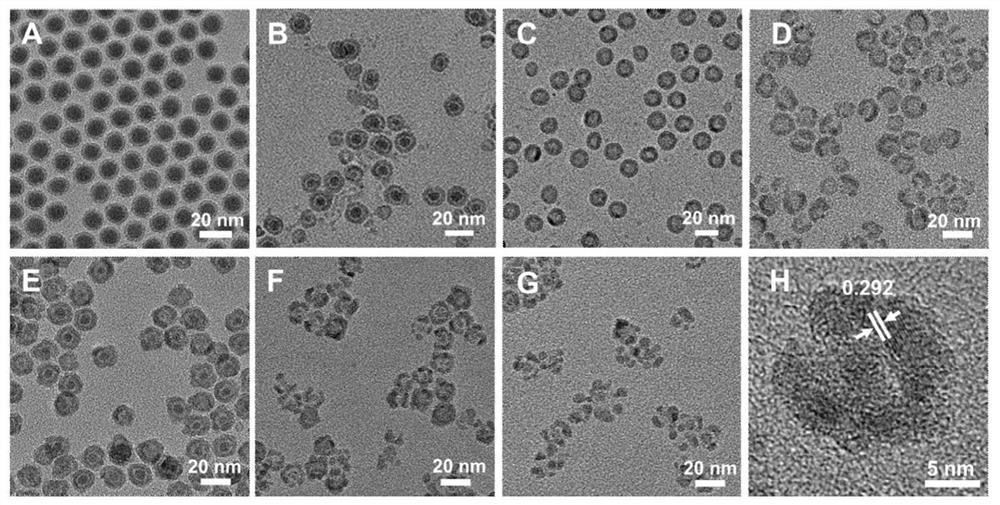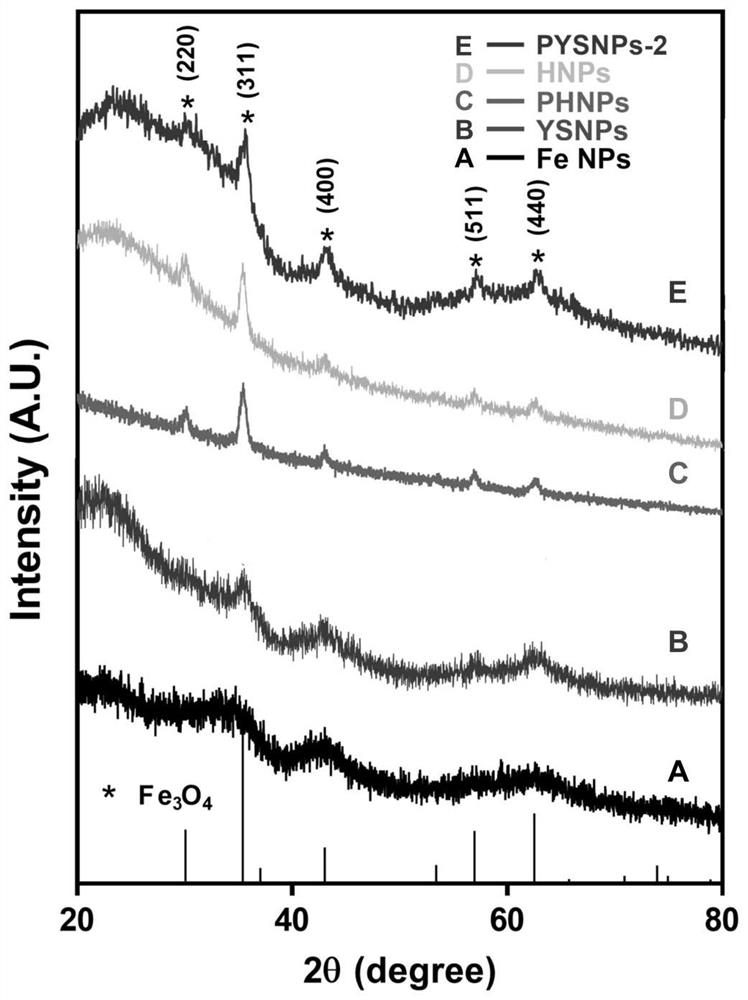Preparation method and application of zero-valent iron delivery nanoparticles
A nanoparticle, zero-valent iron technology, applied in the field of biomedicine, can solve the problems of lack of research on zero-valent siderophore, reduced tumor cell inhibition rate, and high cost of precious metal Pt, and achieves easy production, simple preparation, and good biological safety. Effect
- Summary
- Abstract
- Description
- Claims
- Application Information
AI Technical Summary
Problems solved by technology
Method used
Image
Examples
Embodiment 1
[0045] Example 1: The schematic diagram of the preparation of open-pored zero-valent iron nanoparticles is as follows figure 1 Shown, preparation method comprises the steps:
[0046] (1) Synthesis of nano-Fe NPs (synthesis of zero-valent iron nanoparticle seeds): Accurately measure ODE (20mL) and OAm (0.3mL, 0.9mmol) and mix them in a four-necked flask, and continuously blow argon at 120°C In order to remove the oxygen used in the system, after 30 minutes, the temperature was raised to 180°C at 10°C / min, and Fe(CO) was injected through the syringe 5 (0.7 mL, 5.2 mmol). The reaction system was kept at 180° C. for 20 minutes, and then cooled to room temperature. Precipitate the particles with ethanol, centrifuge at 8000rpm for 5min, discard the supernatant, dissolve the precipitate in n-hexane, wash repeatedly three times, and collect the particles for later use.
[0047] (2) Controlled oxidation of Fe NPs: Add ODE (20mL) and (CH3) to a clean four-neck flask 3 NO (30mg, 0.4m...
Embodiment 2
[0050] Example 2: The surface of each nanoparticle is modified with PEG.
[0051] The dopamine-modified PEG is used to replace the oleylamine molecules wrapped on the surface of the nanoparticles to realize the PEGylated modification of the surface of the nanoparticles, so that they have good water solubility and biocompatibility. Weigh an appropriate amount of nanoparticles and dissolve in chloroform, add four times the mass of mPEG-DPA and stir for 12 hours. Chloroform was blown dry, and the mPEG-dopamine-modified nanoparticles were subsequently dried and dispersed in water, and then further purified by a PD-10 column.
Embodiment 3
[0052] Example 3: The surface of each nanoparticle is modified with iRGD.
[0053] Modification of the tumor-specific recognition molecule iRGD on the surface of nanoparticles can realize the active targeting of nanoparticles to tumor tissue, which is conducive to increasing the accumulation of nanoparticles in tumor tissue and improving the tumor treatment effect of nanoparticles and the diagnostic efficiency of magnetic resonance imaging. Concrete preparation process is as follows:
[0054] Utilize dopamined PEG and PEG-maleimide (PEG-MAL) to replace oleylamine on the surface of nanoparticles. After the reaction, dry the nanoparticles and dissolve them in water. Add an appropriate amount of iRGD-SH and place on a shaker Shake the reaction for 4h. After the reaction is completed, it is further activated through a PD-10 column.
[0055] The preparation of RGD-modified nanoparticles with an open pore structure in this example has been improved and optimized from the synthesis...
PUM
 Login to View More
Login to View More Abstract
Description
Claims
Application Information
 Login to View More
Login to View More - R&D
- Intellectual Property
- Life Sciences
- Materials
- Tech Scout
- Unparalleled Data Quality
- Higher Quality Content
- 60% Fewer Hallucinations
Browse by: Latest US Patents, China's latest patents, Technical Efficacy Thesaurus, Application Domain, Technology Topic, Popular Technical Reports.
© 2025 PatSnap. All rights reserved.Legal|Privacy policy|Modern Slavery Act Transparency Statement|Sitemap|About US| Contact US: help@patsnap.com



